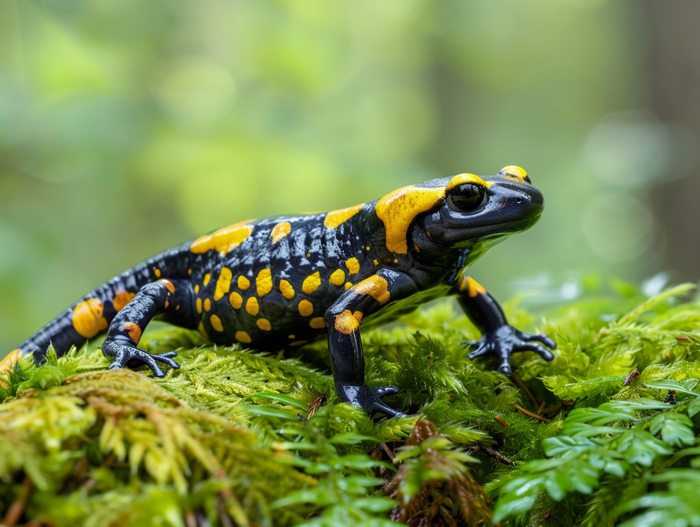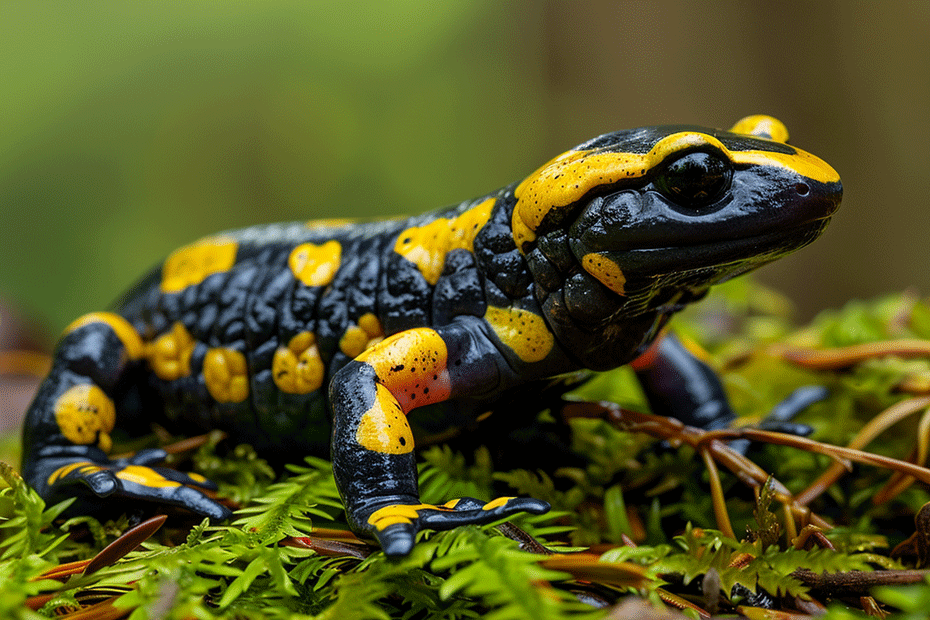Curious about how salamanders manage to breathe? These fascinating creatures have a unique way of taking in oxygen that sets them apart from other animals. Understanding the breathing mechanism of salamanders sheds light on their remarkable adaptability to different environments. Let’s jump into the world of these amphibians and uncover the secrets of their breathing process.
Unlike humans, salamanders don’t rely solely on lungs to breathe. Their skin plays a crucial role in gas exchange, allowing them to absorb oxygen directly from the environment. This dual breathing system enables salamanders to thrive in various habitats, from moist forests to underground burrows. Delving deeper into the intricacies of their respiratory system unveils a world of evolutionary marvels that have helped salamanders survive for millions of years.
By exploring the mechanisms behind how salamanders breathe, we gain insights into the remarkable adaptations that have allowed these creatures to conquer diverse ecosystems. From skin breathing to lung respiration, salamanders showcase nature’s ingenuity in ensuring their survival. Join us on a journey to uncover the mysteries of salamander respiration and appreciate the wonders of these remarkable amphibians.
Key Takeaways
- Salamanders have a unique dual breathing system using both skin and lungs.
- Cutaneous respiration allows them to absorb oxygen directly from the environment, leading to adaptability in various habitats.
- Aqua-Nasal Respiration in aquatic salamanders enhances breathing efficiency in water.
- Factors like moisture levels, temperature, and oxygen availability impact salamanders’ respiration.
- Evolutionary adaptations like permeable skin and burrowing behaviors aid in efficient respiration.
- Understanding salamander respiration sheds light on their remarkable survivability in diverse ecosystems.
Overview

Salamanders possess a remarkable breathing mechanism that sets them apart in the animal kingdom. Here’s how these amphibians, with their diverse respiratory adaptations, navigate different habitats:
- Cutaneous Respiration:
- Definition: Through their skin, salamanders absorb oxygen directly from the environment.
- Importance: Enables respiration underwater or in areas with low oxygen levels.
- Pulmonary Respiration:
- Definition: Utilizing lungs to breathe oxygen.
- Role: Primary method of respiration in most terrestrial salamander species.
- Dual Breathing System:
- Significance: Allows salamanders to adapt to a wide range of ecosystems and environmental conditions.
- Respiratory Efficiency:
- Adaptation: Evolutionarily developed to maximize oxygen intake for survival.
By delving into the intricacies of salamander respiration, you’ll gain a deeper understanding of the fascinating ways these creatures have evolved to thrive in diverse surroundings.
Respiratory System of Salamanders

Cutaneous Respiration
- Salamanders can breathe through their skin.
- Their skin is permeable to oxygen and carbon dioxide.
- This Cutaneous Respiration allows salamanders to breathe even underwater.
Buccal Pumping
- Salamanders also use Buccal Pumping.
- They take in air through their mouth.
- Oxygen is absorbed into their bloodstream while carbon dioxide is released.
- Some aquatic salamanders possess Gills.
- Gills help in oxygen exchange in water.
- This adaptation enhances breathing efficiency for aquatic environments.
Understanding the respiratory system of salamanders sheds light on their remarkable ability to thrive in various habitats.
Factors Affecting Breathing in Salamanders

Environmental Conditions
- Moisture Levels: Salamanders require moist environments for cutaneous respiration.
- Temperature: Optimal breathing efficiency is maintained within specific temperature ranges.
- Oxygen Availability: Adequate oxygen levels are crucial for effective respiration.
- Skin Permeability: The skin’s ability to exchange gases impacts respiratory efficiency.
- Lung Capacity: Salamander species with lungs rely on them for additional oxygen intake.
- Metabolic Rate: Higher metabolic rates increase oxygen demand for respiration.
Keep in mind these factors as you explore and understand the intricate process of breathing in salamanders.
Adaptations for Efficient Respiration
Breathing in salamanders is a complex process involving various adaptations that enable them to efficiently extract oxygen from their environment. Understanding these adaptations sheds light on how these amphibians survive and thrive in diverse ecosystems.

Skin Characteristics
- Permeable Skin: Salamanders have thin, permeable skin that allows for gas exchange. This unique trait enables them to absorb oxygen and release carbon dioxide directly through their skin.
- Cutaneous Respiration: Through cutaneous respiration, salamanders can supplement their oxygen intake, particularly when underwater or in low-oxygen environments.
- Moisture Dependence: Due to their permeable skin, salamanders require moist environments to prevent dehydration and help efficient respiration.
- Aqua-Nasal Respiration: Some aquatic salamanders have developed the ability to respire through their skin and specialized structures in their throat, known as aqua-nasal respiration.
- Aerial Respiration: When above water, salamanders use pulmonary respiration using their lungs. This dual-respiratory system enhances their adaptability to different environments.
- Burrowing: Burrowing behaviors help salamanders access moister soil, aiding in maintaining the necessary skin moisture levels for effective respiration.
Understanding these adaptations gives valuable insights into the intricate mechanisms salamanders have evolved to master efficient respiration in various habitats.
Conclusion
Salamanders’ unique respiratory adaptations, such as cutaneous respiration and aqua-nasal respiration, showcase their remarkable ability to thrive in various environments. Their efficient use of both skin and lungs for oxygen intake enables them to navigate between aquatic and terrestrial habitats seamlessly. By maintaining optimal skin moisture levels through burrowing, salamanders ensure their respiratory processes remain effective. Understanding these intricate respiratory mechanisms is crucial for appreciating the resilience and adaptability of these fascinating amphibians in diverse ecosystems.

Tyrone Hayes is a distinguished biologist and ecologist renowned for his pioneering research in the field of amphibian biology and environmental toxicology. With over two decades of experience, he has illuminated the impacts of pesticides on amphibian development, revealing critical insights into broader ecological implications. Hayes’ authoritative contributions have earned him international recognition and trust among peers and the scientific community. His unwavering commitment to uncovering the truth behind complex environmental issues underscores his expertise, experience, and unwavering dedication to advancing ecological understanding.
